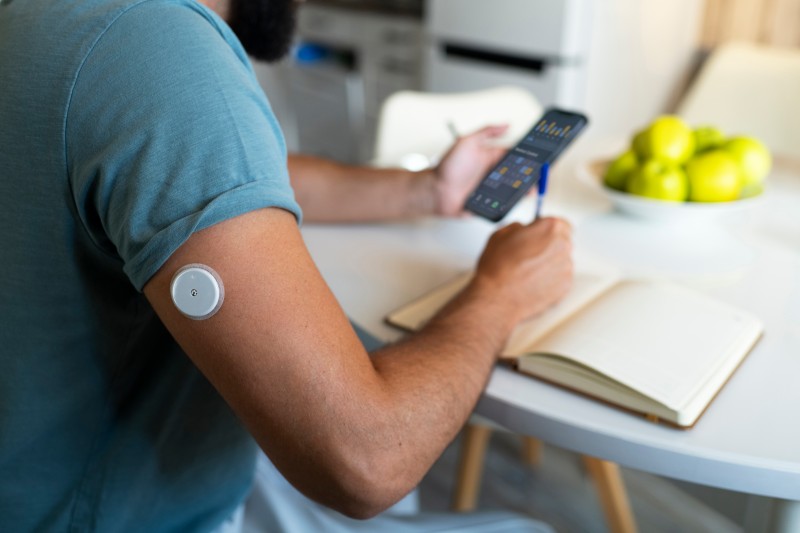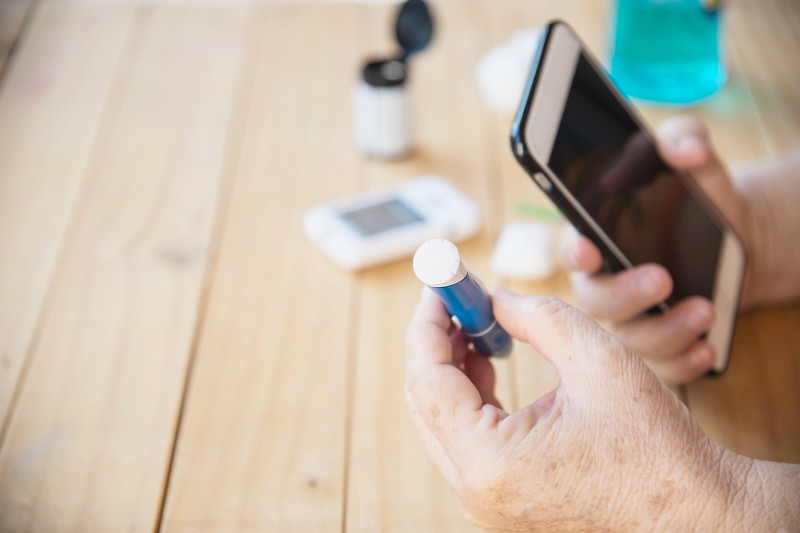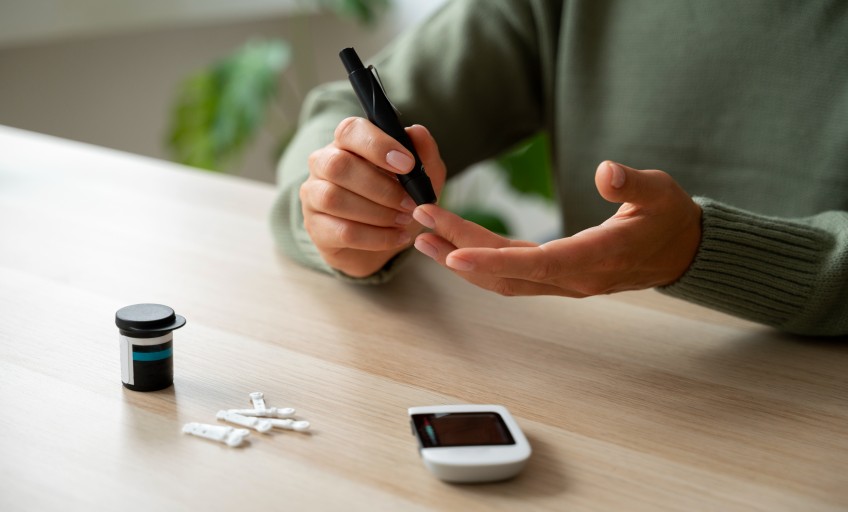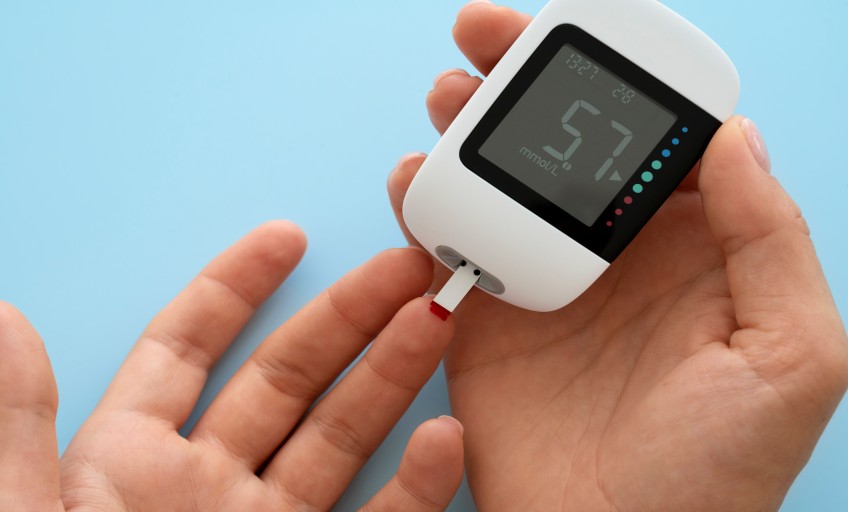Key Takeaways
- Tracking insulin levels is important to manage diabetes.
- Insulin tracking can be done manually or with the help of a device.
- It prevents low or high blood sugar, helps adjust doses, and identifies patterns.
- Monitor blood sugar regularly, count carbs, and be aware of low blood sugar symptoms.
Monitoring insulin is one of the most important aspects of managing diabetes, especially if you have टाइप 1 डायबिटीज and take insulin.
इनके बारे में जानें:
- The importance of insulin tracking
- Methods of tracking insulin
- The benefits of tracking insulin
- Tips for effective insulin tracking
The importance of insulin tracking
Tracking insulin levels is important for people with diabetes. Checking ब्लड शुगर की मात्रा can help them:
- Determine how much insulin to take before meals and understand how food affects their blood sugar.
- Identify patterns and adjust their treatment plan as needed.
- Avoid low or high blood sugar levels before sleeping.
- Understand how different types of exercise impact their blood sugar before and after exercise.
- Understand how different foods impact their blood sugar after meals.
- Achieve their blood sugar target ranges.
Methods of insulin tracking
You can track insulin manually or with the help of a device, as mentioned below.
Manual blood sugar monitoring
Manual blood sugar monitoring involves using a glucose meter and test strips. This is a ‘finger stick check.’ You prick your fingertip with a small needle to produce a blood drop. You then place the drop against the test strip in the glucose meter, and the meter shows your blood sugar level within seconds. These checks only measure blood glucose at one moment, so people with diabetes, especially those taking insulin, often have to check their blood sugar several times a day using this method.
Continuous Glucose Monitoring (CGM) systems
CGM involves wearing a device that measures your glucose levels 24 hours a day. The device uses this data to form a graph that shows a more complete picture of how your blood sugar levels change over time. Most CGM devices use a tiny sensor that you insert under your skin. The sensor measures glucose levels in the fluids between your body’s cells.
Insulin pumps

Insulin pumps can help people with diabetes conveniently manage their blood sugar. These small, wearable devices deliver insulin doses at specific times and are an alternative to multiple daily injections. Two main types of insulin pumps are available: one with tubing and one without tubing. Anybody with diabetes who requires synthetic insulin may use an insulin pump.
The benefits of tracking insulin
Prevents hyperglycemia and hypoglycemia
Hypoglycemia or low blood sugar can lead to serious consequences, including brain damage and sudden death. Symptoms include cold sweats, hunger, confusion, and blurred vision. Hyperglycemia or high blood sugar is associated with an increased risk of complications and mortality. Tracking insulin levels can help you avoid emergencies caused by these sudden spikes or drops in blood sugar.
Helps adjust insulin doses effectively
Sugar levels can spike after a meal, especially if you take insulin. Monitoring insulin levels is important for self-monitoring blood glucose, as it helps your doctor decide and adjust your insulin medication.
Helps you identify patterns and trends
Tracking insulin helps you to see what makes your levels go up or down. These results can also help you decide about food, physical activity, and insulin dosing. They can help you track patterns and adjust your care plan if needed.
Support for lifestyle adjustments
Understanding how your lifestyle choices impact blood sugar and insulin needs can guide dietary and शारीरिक गतिविधि decisions.
Tips for effective insulin tracking

Here are some tips you can follow for tracking insulin effectively:
- Monitor your blood sugar regularly, before meals, before bed, when you experience low blood sugar, and before and after exercising.
- Count your carbohydrates. This will keep you in control of your blood sugar, in balance with your medication or insulin dose, and in control of food portions to manage your body weight.
- Set goals for your blood sugar levels before and after meals and before bed.
- Know how to fix your blood sugar levels when they are not where you want them to be.
- Be aware of low blood sugar symptoms, such as feeling shaky, weak, tired, hungry, lightheaded, irritable, anxious, or confused.
- Understand glucose emergency responses.
Tracking insulin can help you manage your diabetes and make informed decisions about your health.
Stay tuned to the Activ Living Community. Keep up to date with the latest health tips and trends through expert videos, podcasts, articles, and much more on पोषण, फिटनेस, सचेतन, और लाइफस्टाइल से जुड़ी बीमारियां like Asthma, Blood Pressure, Cholesterol, and Diabetes. Activ Living ke saath sahi sehat ki shuruat ABHI karo.
You may also be interested in the following blogs:
- What Is Insulin Resistance And How Can You Manage It With 3 Lifestyle Changes
- Managing Diabetes In The Summer Heat
Popular Searches
How to lower blood pressure | Fruits good for liver | Unhealthy foods | रागी के लाभ | बेसल मेटाबोलिक रेट | हाई ब्लड प्रेशर के लिए एक्यूप्रेशर पॉइंट्स | Ayurvedic medicine for blood pressure | How to control cholesterol at home | Homeopathy for Asthma | Biological Age | Home remedies for TB | Natural beta blockers | Negative effects of internet | Types of walking | ब्लड प्रेशर कैलकुलेटर | ब्लड शुगर कैलकुलेटर | BMI कैलकुलेटर





 1800-270-7000
1800-270-7000








